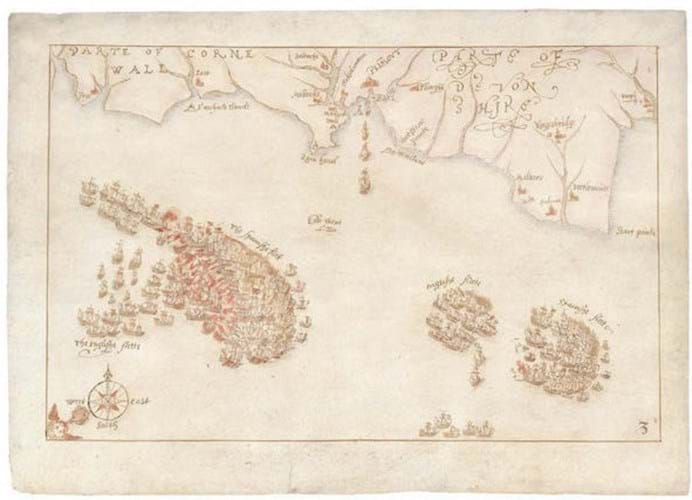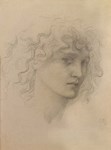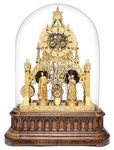
The 10 hand-drawn maps are the only known contemporary drawings of the defeat of the Spanish Armada in 1588 and have been temporarily prevented from being exported on the advice of the Reviewing Committee on the Export of Works of Art and Objects of Cultural Interest (RCEWA).
A number of candidates have already ruled themselves out of the running. The British Library cannot raise funds to buy them as it is an expert adviser in the export licence application process. The Royal Museums Greenwich has also said it is not planning to fundraise.
“Challenging”
A statement from Art Fund said: “To ensure these rare maps are saved for the nation, a UK third party such as a museum, library or university collection, would need to raise the funds.
“The funding environment is of course currently exceptionally challenging as the cultural and heritage sectors work hard to survive and adapt in the aftermath of Covid-19. Government bodies, trusts and foundations have traditionally played an important role in supporting such campaigns.
“Art Fund is known for such campaigns to save art for public display in the UK; when asked to contribute, the general public tends to be exceptionally generous and we always stand ready to talk with museums.”
The maps, drawn by an unknown draughtsman, possibly from the Netherlands, relate to the most famous images of the conflict – a series of engravings completed in 1590 by Augustine Ryther.
The original drawings by surveyor of the Queen’s Works and military engineer Robert Adams (d.1595) which were used by Ryther have been lost. However, it is believed this collection of maps are near-contemporary copies.
RCEWA committee member Peter Barber said: “Robert Adams was one of the most skilled cartographic draughtsmen of Elizabethan England, the delicacy of his work resembling the finesse of miniaturists such as Hilliard.
“His maps of the Armada, engraved in significantly amended form by Augustine Ryther, became the official image of one of the most celebrated episodes in English history. Their importance in the creation of England’s historic self-image cannot be exaggerated. They provided the models for tapestries which served as a backdrop for the proceedings of the House of Lords and for nearly 250 years.
“Saved for the nation”
“These drawings are as close as one is ever likely to get, in the absence of the originals, to the appearance of Adams’ manuscript maps but there is much fresh information that can be gleaned from them. That they were probably copied, surreptitiously, by a Dutch artist for illicit publication in the Netherlands demonstrates the importance of the defeat of the Armada not only for England but for Europe as a whole. The drawings need to be saved for the nation so that the full story behind the creation of these iconic images can be properly researched.”
The maps had been owned by Roger Wilbraham MP (1743-1829) in 1828. The earlier provenance is not known. The Wilbraham family then sold the drawings at a Sotheby’s sale in 1898 and they were bought by London bookseller J Pearson and Co and later sold to William Waldorf Astor (1848-1919).
They were then inherited by the Waldorf Astor family. More recently dealer Daniel Crouch acquired the group and agreed to sell the maps to an overseas buyer who applied for the export licence.
Crouch said: “To find any sixteenth century English drawing is cool. To find one depicting such an iconic and historically important event is extraordinary. To find all ten drawings from a set of ten in good condition is truly astonishing.”
The decision on the export licence application for the drawings will be deferred until October 9 and may be extended until January 9, 2021, if a serious intention to raise funds to purchase them is made at the recommended price of £600,000 plus VAT.














